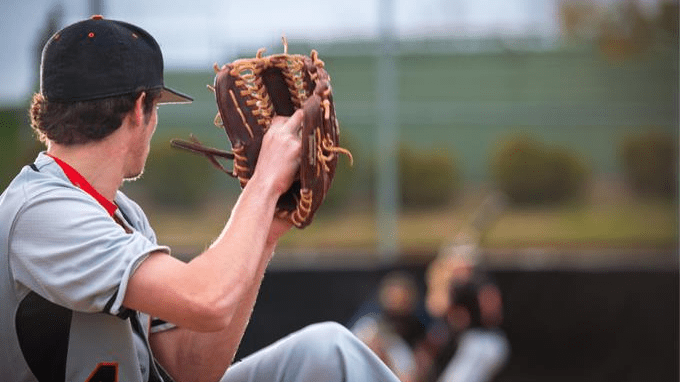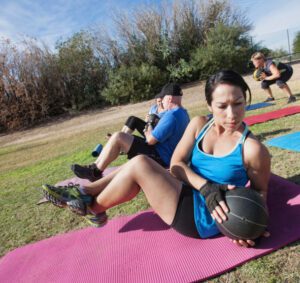In a recent submission to the CoachUp Q&A, we were asked for mental and physical tips for young pitchers. Pitching is as much an art form as any element of competition in sports, and for that reason, this question is deserving of a full blog post in response. Given that the question is geared specifically to “young pitchers” we will keep things pretty simple here, but simplicity shouldn’t be overlooked as uninformed when talking pitching. For most, overcomplicating things is what gets in the way of continued progress, and, even more importantly, having fun. With that cleared up, let’s get into some of the best tips for young pitchers trying to up their game.
Best tips to give young pitchers to help them improve their game
Physical
First and foremost, finding your motion—the one that you find most comfortable—is key. Some prefer a full windup and others like to be in the stretch full-time. Arm angles come naturally and differ among each individual. There are a million pitching coaches out there, each with their own philosophy, and many with a concrete idea of the right and wrong way to do things. It’s imperative to find a coach who can see who you are as a pitcher, and work with your body to maximize your ceiling.
Second, and more specific to all, is to prioritize being linear to the plate at all times. Simply, getting your body—your feet, hips, shoulders, elbow and chin—heading to the plate in a repeatedly straight line. A lot of young pitchers struggle mightily with flying open, or having a weak front side. Their front half favors their glove side and becomes rotational, causing their throwing arm to drag behind in their delivery, and forcing them to throw across their body in order to find the zone. This is a super common habit, but it’s a tough one to break. Focusing on this linear path every time that you play catch will help to correct your delivery on the mound and build up muscle memory. There are a couple of quick and easy drills to work into a catch routine to help keep a focus on staying linear.
Finally, for the physical aspect of pitching, a tip that all young pitchers can employ is throwing with their legs. That is a super basic talking point among pitchers, and doesn’t make any sense without each layer being broken down, but we’ll quickly touch on a couple of the most crucial points behind the idea.
– Hips: the leading hip should be the first thing going to the plate on every pitch. That will help to keep your arm “on time” in your delivery by getting the center of your body moving towards the target first. It is also where the most of your strength and power comes from. It’s not necessarily a violent back leg push-off of the rubber, but rather a purposeful motion to get all of your bodyweight headed to the plate early.
– Knees: Your leading knee is more of a tool to create energy, rather than one to propel yourself to the plate, so experimenting with your leg kick will ultimately help you to find comfort in your motion above anything and can be tweaked later on to increase torque and separation. The back knee, however, has some more to do with getting to the plate with efficiency. Some bend in that knee should be present, and it should be thought of somewhat as a spring that will uncoil and push through the delivery. The hips and knees work together in a pitcher’s delivery, and if used properly, can maximize power on the linear plane that was touched on above.
Mental
Keeping the physical side of pitching in layman’s terms will help young pitchers to form their physical identity on the mound, and can help to establish their mentality as well. Finding just a couple of points to focus on when on the mound will help to keep overcomplication out of the picture and allow pitchers to attack the strike zone, rather than worry about how they will do it.
Another simple tip, beyond employing simplicity itself, is to always believe in your “stuff.” Some days a pitcher will have all of their pitches working—the fastball is on the black, the changeup is diving, and the breaking ball is sharp—but on many days a pitcher is left to make the most of what he’s got that day. If their changeup is flat, or their breaking ball is just spinning, they’ll need to attack with their fastball. The tip here is to not panic if plan A—all of your pitches being “on”—fails, but to rather have confidence that you can figure it out with plans B and C. Each of which will be predominantly focused purely on competing and trying to win.
At the end of the day, if young pitchers believe that they can always get the job done, no matter what kind of “stuff” they have with them that day, they will likely be able to. And if they can’t get it done that day, they can learn something about themselves and prepare for their next outing.
Pitchers are in constant evolution, and can always get better. Building a strong physical foundation and fortified mentality at a young age will open doors for greater growth earlier on, creating more opportunities in their early days of competition.

With our 100% money-back guarantee and vetted coaches, anyone can achieve their full athletic potential. CoachUp is the safest and easiest way to find a coach for personalized training. Find your perfect coach today and become the athlete you want to be!
How useful was this post?
Click on a star to rate it!
Average rating 0 / 5. Vote count: 0
No votes so far! Be the first to rate this post.




